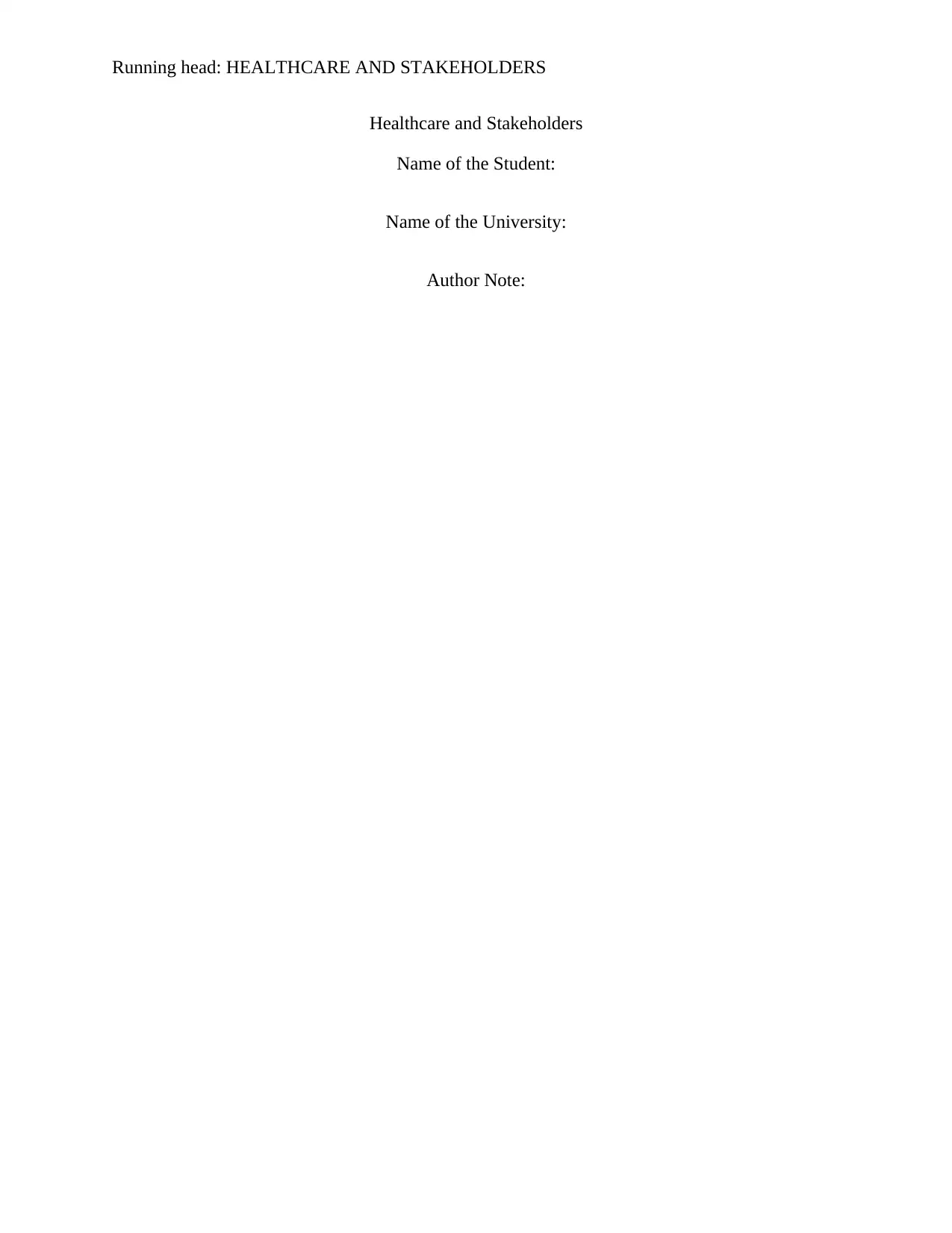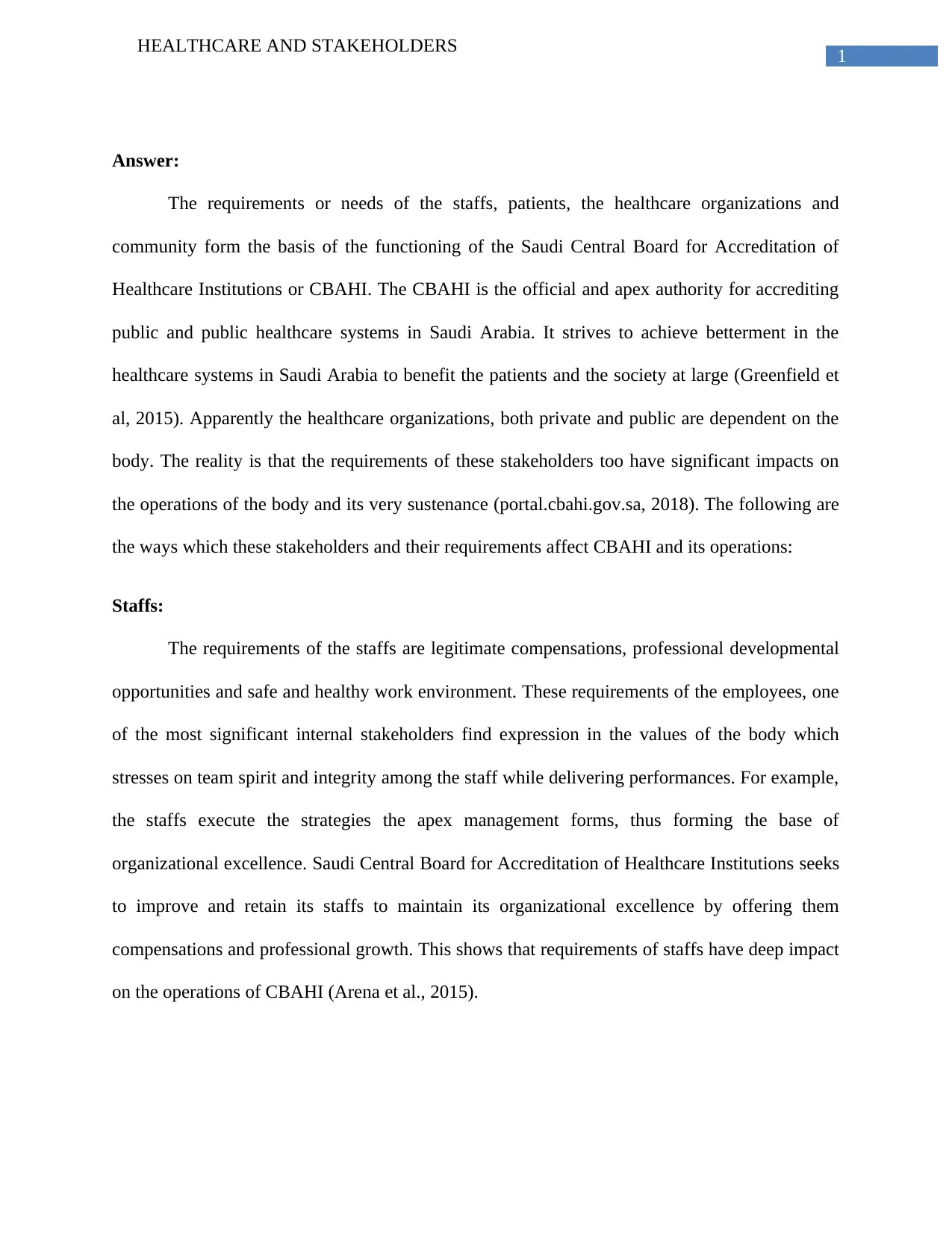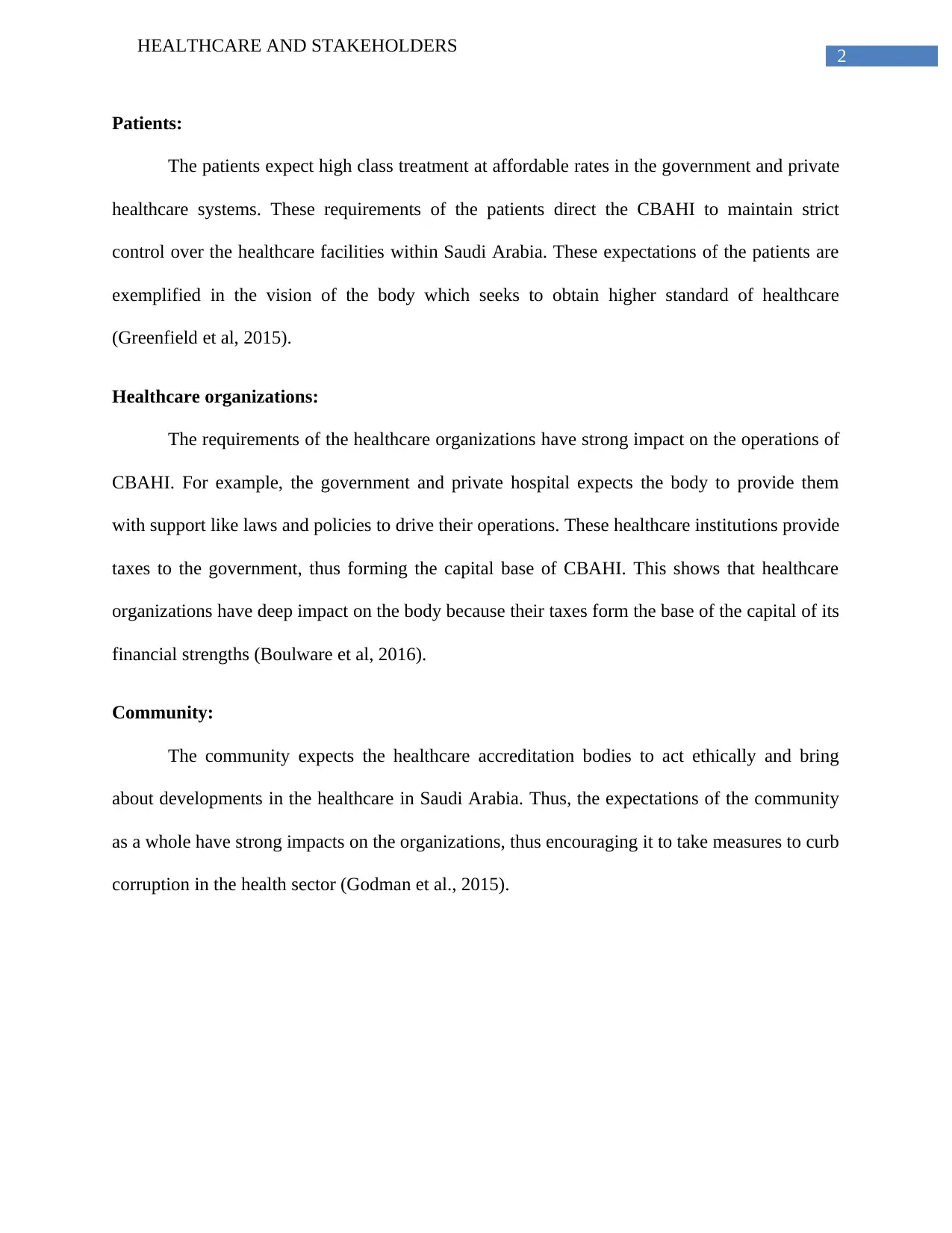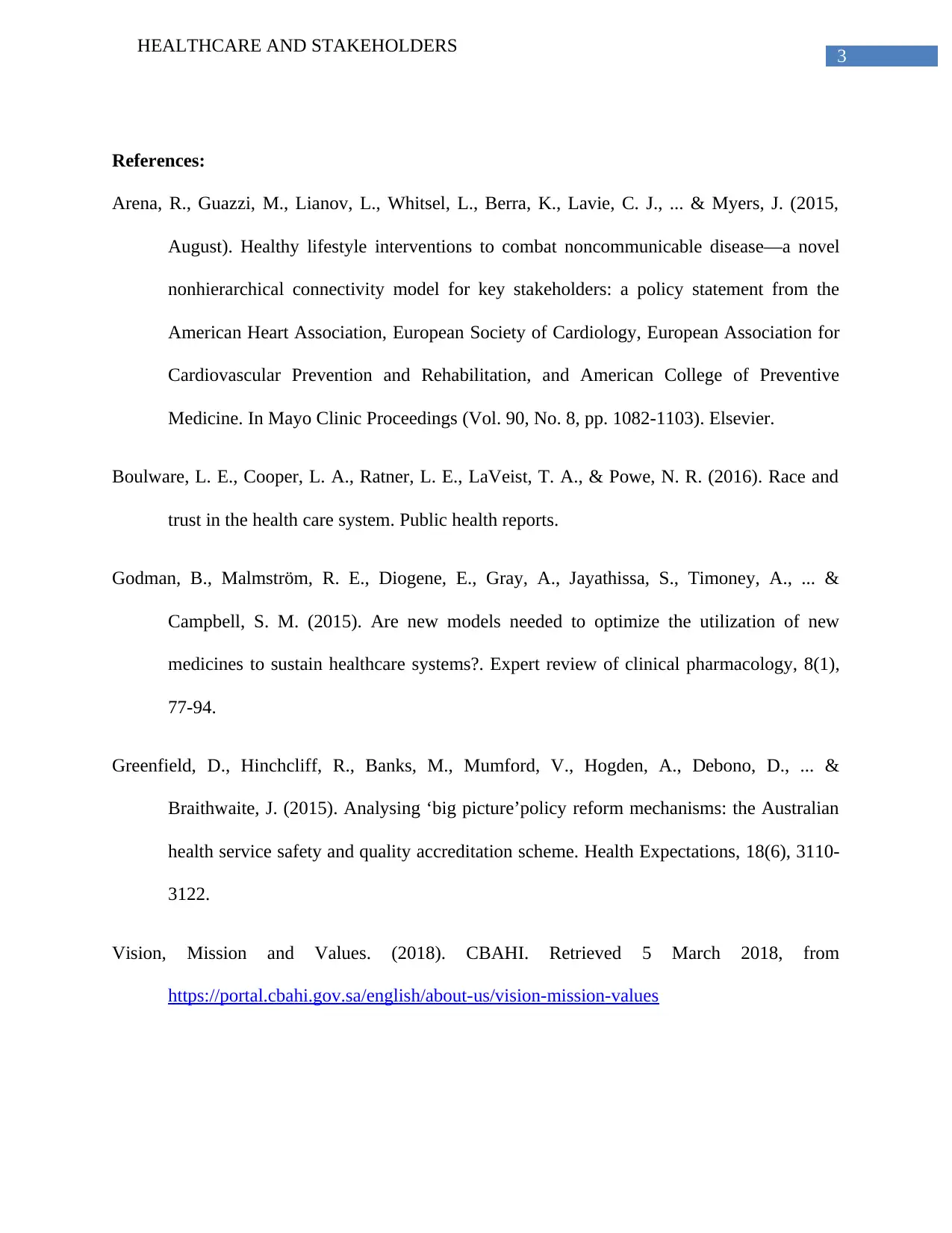Impact of Healthcare Stakeholders on CBAHI Operations and Strategy
VerifiedAdded on 2023/06/15
|4
|821
|439
Essay
AI Summary
This essay examines the influence of various stakeholders, including staff, patients, healthcare organizations, and the community, on the operations of the Saudi Central Board for Accreditation of Healthcare Institutions (CBAHI). It highlights how the needs and expectations of these stakeholders, such as staff requirements for fair compensation and professional development, patient expectations for high-quality and affordable treatment, and healthcare organizations' need for supportive policies, shape CBAHI's strategies and functions. The analysis emphasizes that CBAHI's mission to improve healthcare standards in Saudi Arabia is intrinsically linked to addressing the diverse needs and expectations of its stakeholders, ultimately contributing to the betterment of the healthcare system and the well-being of the Saudi society.
1 out of 4











![[object Object]](/_next/static/media/star-bottom.7253800d.svg)